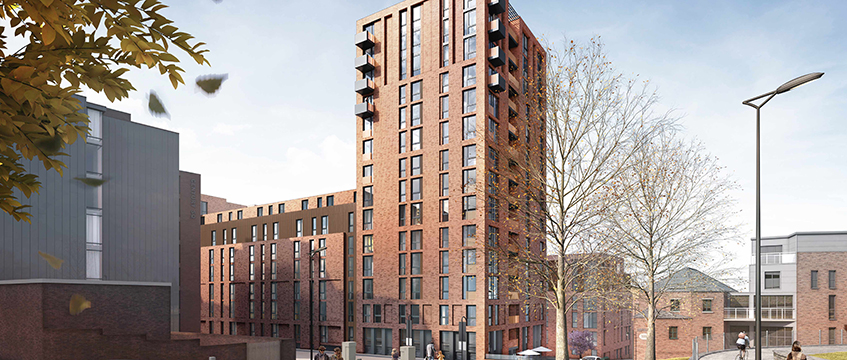Despite country-wide regional uncertainty, the UK’s build-to-rent sector is booming, and no longer just in London and core regional cities.
The UK is facing a stormy start to 2019 as the government and parliament continue to slog it out over Brexit and confidence in the housing market stalls. Bucking the trend, however, is build-to-rent, which only a few years ago was still seen as not being an effective competitor for build-for-sale but is now powering ahead.
Addleshaw Goddard first got involved with build-to-rent in 2012, as the government commissioned the Montague Report and set up the PRS Taskforce. In 2015, we published a major report jointly with the British Property Federation that included contributions from all parts of the sector: developers, funders and asset managers. Now we have partnered with the BPF and Savills to produce an update report that we are launching this spring.
While our earlier reports have focused on the hurdles that stood in the way of a thriving BTR sector, now we’re able to report on the ever-increasing numbers of buildings in planning and under construction. Spoiler alert: Savills reports that at summer 2018 more than 132,000 units were in the planning system and sites under construction have an ability to deliver around 42,000 units.
Branching out
Another big change is that BTR is no longer just about flats, and no longer just about London and the core cities. The sector is growing rapidly in Scotland and English towns and cities from Swindon to Stoke-on-Trent and from Newcastle to Southampton, and we’re seeing a number of new schemes that include family housing.
And while BTR has been seen as a product for young people, there is evidence that it’s increasingly a tenure for all ages – for families who prefer a quality rental product and for seniors who prefer a vibrant central location.
The planning system is also no longer seen as an impediment to delivery. Central and local government policy now recognises that BTR should be treated differently from traditional tenures when assessing the amount and type of affordable housing that needs to be provided. The planning challenge is now no different from that faced by any other type of development: under-resourced local authority planning teams and a consent process that is often slow and cumbersome.
The funding has also become easier, with BTR providing a good example of how a proactive public sector can make a real difference: Homes England funding for development and the government-backed Venn Partners scheme for the investment phase have seen a good take-up and helped deliver some groundbreaking schemes, such as Dandara’s 2,000-unit portfolio across sites in Birmingham, Leeds and Salford.
Long-term income stream
BTR has also attracted an increasing number of forward funding investment, with the long-term income stream that the product offers lending itself to this type of structure. And while a few years ago the big banks were still wary of BTR, all the major UK banks – as well as German and Irish banks – are now keen to develop their exposure to BTR, providing both development finance and debt to the forward funders.
The report also looks at how there’s a new focus on residents of BTR units as customers rather than tenants. This is driven by the provision of on-site entertainment and food and drink opportunities, as well as concierge services and high-quality shared areas. We describe how, coupled with longer tenancies, these attributes are helping to distinguish BTR from the wider private rented sector.
And we also have an eye on the housing sector beyond BTR and the new kid on the block, co-living. Much like BTR a few years ago, it’s being eyed with suspicion by planners and policymakers, but there’s undoubtedly a lot of interest and demand.
So while there’s much good news to report, there’s still work to do: challenges include ensuring that demand for the product continues to grow, overcoming hurdles in the planning system and developing the BTR secondary market. Relatively few BTR assets are traded at present, but once they are we’ll know that the asset class has truly arrived.
Marnix Elsenaar is a partner at Addleshaw Goddard











